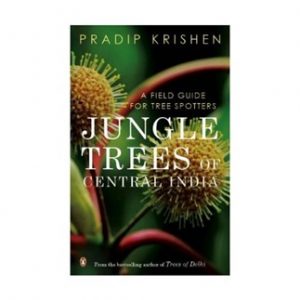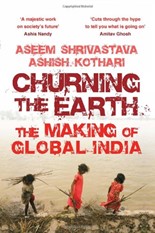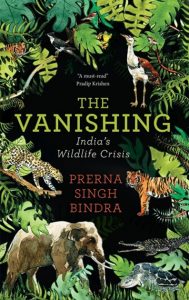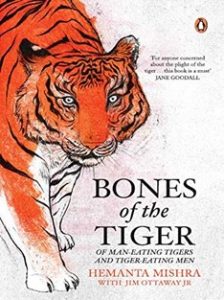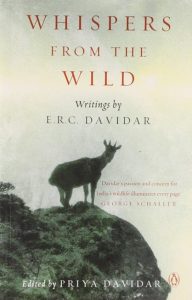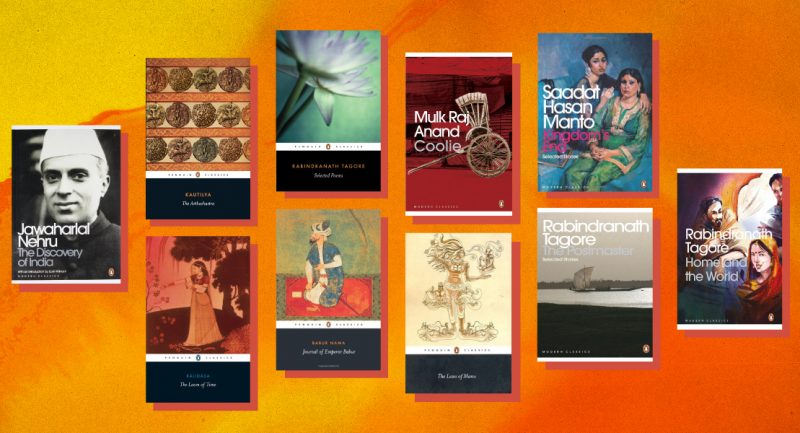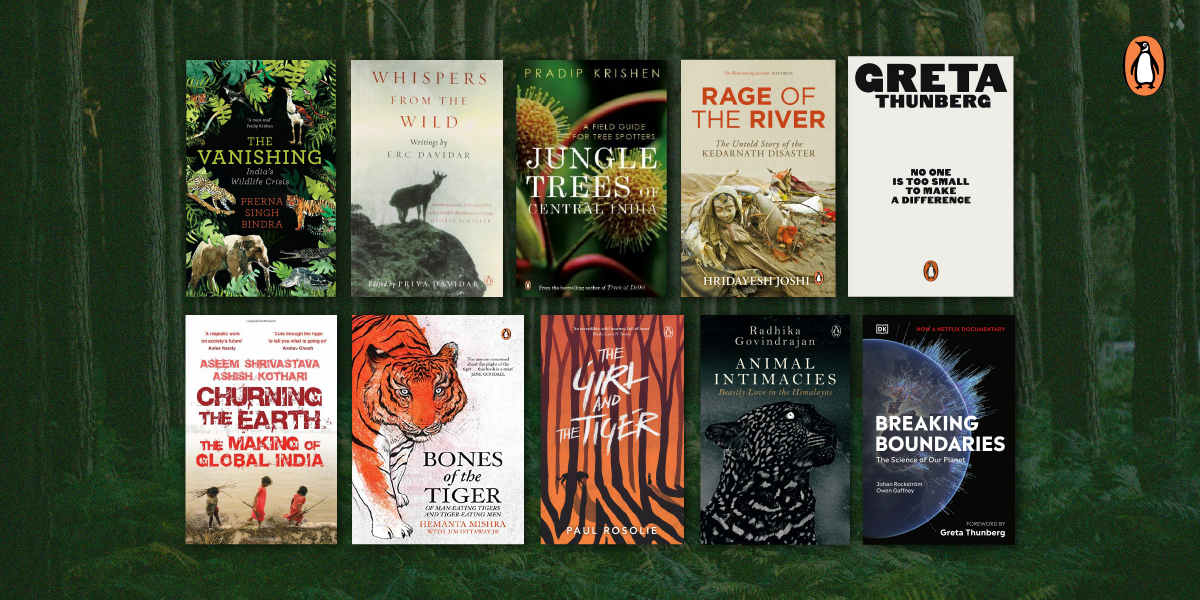
When we were young, we’d study about the environment and how we as humans are contributing to its degradation. But that was just something we were told…as adults, we seldom do all we can as individuals to help the environment.
“Progress is impossible without change, and those who cannot change their minds cannot change anything.” -George Bernard Shaw
The first step in a healthy environment is to understand it better. And here is a list of books to help you with just that. We all can do our parts to help the environment, and we must begin immediately.
Jungle Trees of Central India
Covering an area larger than France, and including five of India’s most visited tiger reserves, the forests of Central India are one of the country’s most iconic wildscapes. Jungle Trees of Central India is a lavishly illustrated and user-friendly field guide to every wild tree you are will see in this entire region. A culmination of four years of research, the book has over 2000 photographs with thumbnail keys to all the bark, flowers, fruit and leaves. An ideal companion for your travels in the region, this book will turn you into an expert tree spotter and take your enjoyment of wild places to another level.
Rage of the River
On 17 June 2013, a normally calm Mandakini came crashing down from the hills in Uttarakhand and destroyed everything in its path: houses, bridges, dams and the town of Kedarnath. Thousands of people perished and lakhs lost their livelihood.
Three years after the disaster, stories from the valley-of pain and sorrow, the state government’s indifference and the corporate goof-ups, and the courage and heroism shown by the locals in the face of an absolute catastrophe-still remain largely unheard of.
Churning the Earth
The world stands so dazzled by India’s meteoric economic rise that we hesitate to acknowledge its consequences to the people and the environment. In Churning the Earth, Aseem Shrivastava and Ashish Kothari engage in a timely enquiry of this impressive growth story. They present incontrovertible evidence o nhow the nature of this recent growth has been predatory and question its sustainability. Unfettered development has damaged the ecological basis that makes life possible for hundreds of millions resulting in conflicts over water, land, and natural resources, and increasing the chasm between the rich and the poor, threatening the future of India as a civilization.
The Vanishing
Every year, our planet loses over 150 species of plants and animals, and India is very much in the midst of this mass ‘sixth extinction’. We are losing species in our backyard—where are the once ubiquitous sparrows, or the fireflies that lit up our nights? And in the forests, iconic species like the great Indian bustards are down to a hundred, while flamingoes are poised to be wiped off the map of India.
The Girl and the Tiger
Isha is a girl who loves animals but struggles in the confines of school. When she is sent away to live with her grandparents on the Indian countryside, she discovers a sacred grove where a young Bengal tiger has taken refuge. Isha knows that the ever-shrinking forests of India mean there are few places left for a tiger to hide. When the local villagers also discover the tiger, Isha finds herself embroiled in a life or death cultural controversy.
Bones of the Tiger
Majestic and beautiful, ferocious and lethal, the tiger has captivated the imaginations of people the world over for centuries. Inspiring myth and folklore as a graceful creature and terrifying predator, this big cat has long paced the jungles of Asia in a history strewn with conflict between man and beast – man-eating tigers have terrorized people for centuries. But in the twenty-first century, this conflict has turned on its head – tiger-eating men fund a very lucrative black market for tiger parts, and poachers and habitat destruction have brought the population down to less than 3200 individuals in the world today. A true adventure tale, Bones of the Tiger tells the fascinating story of one man’s quest to save the man-eating tigers of Nepal.
Whispers from the wild
Some people talk about nature, others listen to it. Listening can reveal wonders like how to befriend an elephant, how to talk to a tiger and how to live in the jungle. Many such amazing experiences crowd this volume containing the unpublished writings from the early and last years of the well-known naturalist, the late E.R.C. Davidar, besides his acclaimed book Cheetal Walk. A lawyer by profession and a shikari-turned-photographer, he established maybe the first ever private elephant corridor in India, near his jungle-cottage, and undertook the first census of the Nilgiri Tahr along the entire range. The book is enriched with photographs from the family album, and not only enlightens us about wildlife and conservation in the Nilgiris, but becomes a memoir of a jungle lover and his family.
Animal Intimacies
What do we really know of the intimate-and intense-moments of care, kinship, violence, politics, indifference and desire that occur between human and non-human animals?
Built on extensive ethnographic fieldwork in the mountain villages of India’s Central Himalayas, Radhika Govindrajan’s book explores the number of ways that human and animal interact to cultivate relationships as interconnected, related beings. Whether it is through the study of the affect and ethics of ritual animal sacrifice, analysis of the right-wing political project of cow protection, or examination of villagers’ talk about bears who abduct women and have sex with them, Govindrajan illustrates that multispecies relatedness relies on both difference and ineffable affinity between animals.
No One Is Too Small To Make A Difference
Everything needs to change. And it has to start today’ In August 2018 a fifteen-year-old Swedish girl, Greta thunberg, decided not to go to school one day. Her actions ended up sparking a global movement for action against the climate crisis, inspiring millions of pupils to go on strike for our planet, forcing governments to listen and earning her a Nobel Peace Prize nomination. This book brings you Greta in her own words. Collecting her speeches that have made history across Europe, from the un to mass street protests, no one is too small to make a difference is a rallying cry for why we must all wake up and fight to protect the living planet, no matter how powerless we feel. Our future depends upon it.
Breaking Boundaries: The Science of Our Planet
In 2009, scientists identified nine planetary boundaries that keep Earth stable, ranging from biodiversity to ozone. Beyond these boundaries lurk tipping points. To stop short of these tipping points, the 2020s must see the fastest economic transition in history.
This book demonstrates how societies are reaching positive tipping points that make this transition possible: Activism groups such as Extinction Rebellion, or the schoolchildren inspired by Greta Thunberg demand political action; countries are committing to eliminating greenhouse gas emissions; and one tipping point has even already passed – the price of clean energy has dropped below that of fossil fuels.







